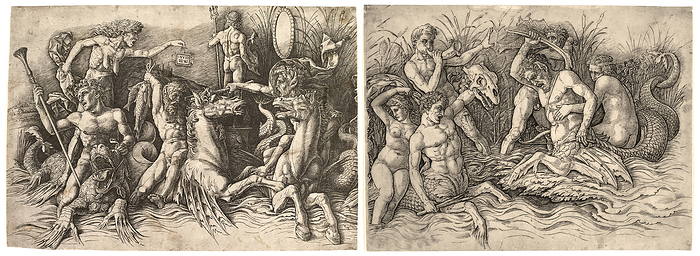
RM
Battle of the Sea-Gods
Battle of the Sea-Gods by Andrea Mantegna ca. 1485-88. This engraving by Mantegna, court painter to the Gonzaga family in Mantua, manifests the revival of classical antiquity during the Italian Renaissance through the choice of subjects and the emphasis on the naturalistic rendering of the human form. Using strategically placed parallel lines, Mantegna creates a compelling sculptural effect in this frenzied aquatic battle, which was inspired by friezes on ancient Roman sarcophagi. The enigmatic scene is presided over by the vice Envy-embodied by the emaciated woman on the left who carries a tablet inscribed with the Latin word for Envy, INVID (IA). Metropolitan Museum of Art., by DAVID PARKER/SCIENCE PHOTO LIBRARY

More
Top Categories
